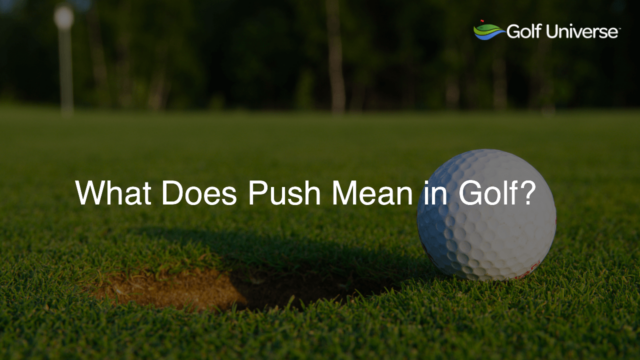The dance floor in golf refers to the putting green, the area on the golf course where the hole is located and where golfers aim to complete the hole by sinking their golf ball. The term signifies the smooth, well-maintained surface suitable for precise putting movements, much like an actual dance floor is for dancing.
Understanding the Dance Floor in Golf
The dance floor in golf is a colloquial term used to describe the putting green, which is a designated area on the golf course where the hole is located. Golfers aim to sink their golf ball into the hole once they have reached this smooth and well-maintained surface, just as dancers would aim to perfect their moves on a dance floor.
Characteristics of the Dance Floor
Smooth Surface
Golf course designers carefully develop putting greens to be flat and even. This precision provides golfers with an optimal surface to make the final strokes of the hole. The smoothness enables golfers to better predict the behavior of the golf ball, ensuring more accurate ball rolls and putts.
Well-Maintained Grass
Putting greens feature a specific type of grass, often bentgrass or bermudagrass, that is maintained to exhibit the ideal texture for putting. The grass on the dance floor is cut shorter than the rest of the golf course and frequently rolled by greenskeepers to create a consistent, fast-paced surface for the golf ball to roll on.
Mastering the Dance Floor
Reading Golf Greens
To excel at putting, golfers must learn how to “read” the dance floor correctly. This requires identifying any subtle slopes or undulations that may impact the golf ball’s trajectory. To do this, golfers analyze the green’s surface, looking for variations in color to discern grain direction, as well as feeling for changes in elevation using their feet.
Pace and Speed Control
Along with reading the green, golfers need to master their putting pace and speed control to successfully navigate the dance floor. Developing a consistent stroke that delivers the right amount of force will enable players to successfully sink more putts on the dance floor and lower their scores.
The Importance of a Quality Dance Floor
A top-notch dance floor plays a crucial role in the overall golfing experience. The condition of the putting green greatly influences the enjoyment and performance of players, as a well-maintained dance floor allows for fairer competition and more precise putting. Golf course managers and greenskeepers should prioritize investing time and resources into nurturing their greens to ensure a high-quality dance floor in golf.
Exclusive Tips from Golf Universe
At Golf Universe, a blog about golf, we not only strive to educate our readers on golf terminology and course features but also aim to help players improve their game. To reap the benefits of an ideal dance floor, consider these exclusive tips from our golfing experts at Golf Universe:
- Confidence: Approach the dance floor with confidence, as a positive mindset can significantly impact your performance on the putting green.
- Pre-shot Routine: Develop a consistent pre-shot routine to ensure your body and mind are properly prepared before each putt.
- Practice: Regularly practice your putting on various types and conditions of dance floors to adapt your skills and master the art of putting.
Get the Right Gear for the Dance Floor
Another key aspect of excelling on the dance floor is using the right equipment. Investing in a high-quality putter and golf balls that suit your game will better equip you for the challenges posed by different greens. Make sure to explore the impressive variety of golf equipment and gear reviews at Golf Universe to make informed decisions and elevate your performance on the dance floor.
FAQ Section
Here are some frequently asked questions (FAQs) related to the dance floor in golf, aiming to address any inquiries golfers might have after reading this blog post:
Why is the putting green called the “dance floor” in golf?
The putting green is called the dance floor because of its smooth, even surface that closely resembles a dance floor. It’s an area on the golf course where precise putting, akin to dancing, takes place.
What type of grass is typically used on the dance floor?
Common types of grass used for the dance floor include bentgrass and bermudagrass. These grasses are specifically chosen for their ideal texture and the ability to be cut short, providing a consistent and fast-paced surface for putting.
How can I improve my performance on the dance floor?
To improve performance on the dance floor, focus on developing confidence, maintaining a consistent pre-shot routine, practicing on diverse putting greens, reading the green correctly, and refining your pace and speed control.
What type of putter is best for achieving success on the dance floor?
The appropriate putter varies depending on individual preferences and playing style. Consider factors such as putter length, head shape, weight distribution, and balance when selecting a putter. Explore equipment reviews on Golf Universe for more guidance.
Do all golf courses have the same type of dance floor?
No, golf courses often have different types of dance floors due to varying factors such as grass type, maintenance practices, regional climate, and course design. This diversity makes it important for players to practice on various putting greens to adapt their skills.











